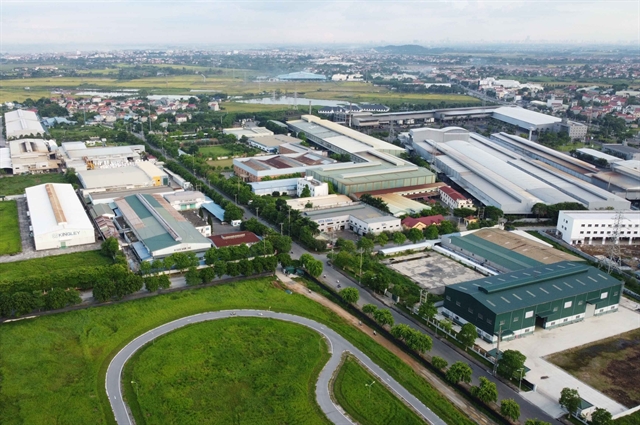 Economy
Economy


|
| A livestream to sell agricultural products. Digital transformation helps provide solutions for enterprises to increase sales for the best added value and to optimise resources. — VNA/VNS Photo |
HÀ NỘI — The goals of digital transformation are not simply to increase revenue or improve management efficiency, but how to obtain the best added value and optimise resources, Lê Nguyễn Trường Giang, Director of the Digital Transformation Strategy Institute, said.
Giang said at the conference on accelerating digital transformation in Quảng Ninh on Sunday that enterprises should clearly understand digital transformation in order to develop their plans.
He said digital transformation is not a movement, trend, or fad. He added that if enterprises only care about increasing sales, improving customer service, and improving management efficiency, the answer should not be digital transformation but increasing information technology application.
He stressed that digital transformation helps provide enterprises with solutions to increase sales, achieve the best added value, and optimise resources.
Digital transformation is the process in which the unmeasurable becomes measurable and the uncountable becomes countable, he said.
For example, enterprises often complain that they find it difficult to access credit, but if they have a good data system, digital transformation will simplify everything because their capacity can now be measured. In addition, measuring enterprises’ resources will help them develop effective solutions for optimisation, he said.
Giang said that the first important step in digital transformation is providing training about knowledge and skills, especially for decision – making positions.
Phạm Thanh Hà, director of VTI Solutions, said there is increasing attention among enterprises to digital transformation. Some planned to spend from 5 to 10 per cent of their revenue on digital transformation.
However, the road remains challenging.
Hà pointed out that few enterprises have raised master plans for digital transformation, but they tend to implement transformation in small parts first and then integrate later, which often causes more difficulties and increases costs.
In addition, Việt Nam’s manufacturing industry is heavily dependent on cheap labour, which raises difficulties in using modern technologies.
According to an annual report about digital transformation by the Ministry of Planning and Investment and the US Agency for International Development, 48.8 per cent of surveyed enterprises applied at least a digital transformation solution but stopped because of inappropriateness.
Only 7.6 per cent developed digital transformation plans for short and long terms.
Another problem is that digital transformation is carried out sporadically without synchronous connection, he said.
According to Trịnh Văn Biển, digital transformation manager of Misa Joint Stock Company, although the awareness of digital transformation is increasing, the implementation is not adequate.
Most enterprises only implement digital transformation in small parts of their operation. For example, trading and services enterprises only focus on financial management and sales, while manufacturing focuses on improving production capacity.
Biên said that enterprises will need support to develop more comprehensive digital transformation plans. — VNS